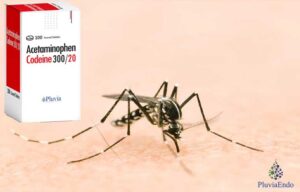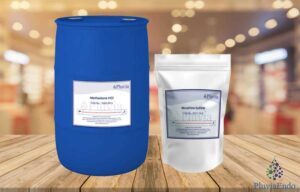The biochemical intricacies of the noscapine class of compounds, originating from the opium poppy, have captivated researchers for decades. Despite noscapine’s renowned antitussive properties, this class encompasses a diverse array of alkaloids with multifaceted biochemical characteristics. In this comprehensive exploration, we delve into the biochemical underpinnings of the noscapine class, shedding light on the mechanisms driving their pharmacological activities and potential therapeutic applications.
Noscapine Class: Biosynthesis Pathway
At the core of understanding the biochemical nature of noscapine class compounds lies the elucidation of their biosynthesis pathway within the opium poppy plant. Through a series of intricate enzymatic reactions, key intermediates are transformed, culminating in the synthesis of noscapine and related alkaloids. Enzymes such as S-adenosyl-L-methionine:3′-hydroxy-N-methylcoclaurine 4′-O-methyltransferase (4’OMT) play pivotal roles in catalyzing crucial steps. They are offering insights into the regulation and modulation of alkaloid biosynthesis. Unraveling these biosynthetic pathways not only enriches our understanding of plant metabolism but also provides avenues for enhancing the production of noscapine-class compounds through biotechnological approaches.
Mechanisms of Action
The pharmacological activities of noscapine-class compounds are rooted in their interactions with molecular targets within the human body. Noscapine’s primary role as a cough suppressant stems from its modulation of the cough reflex. Other alkaloids within the class exhibit diverse mechanisms of action. For instance, noscapine’s antitumor properties arise from its ability to disrupt microtubule dynamics, leading to mitotic arrest and apoptosis in cancer cells. Similarly, noscapine’s anti-inflammatory effects and potential in neurological disorders are attributed to distinct molecular pathways. Understanding these intricate mechanisms not only broadens our knowledge of pharmacology but also unveils the therapeutic potential of noscapine-class compounds in addressing a spectrum of medical conditions.
Metabolism and Excretion
A comprehensive understanding of the biochemical fate of noscapine-class compounds is essential for optimizing their pharmacokinetic profiles and therapeutic efficacy. Metabolic studies have elucidated the pathways involved in the biotransformation of noscapine and its derivatives, shedding light on the role of cytochrome P450 enzymes and phase II conjugation reactions. Moreover, insights into their excretion pathways aid in predicting their clearance from the body and potential drug-drug interactions. This knowledge not only informs drug development and formulation but also guides clinical dosing regimens and pharmacovigilance efforts.
Therapeutic Implications
The biochemical insights garnered from studies on the noscapine class of compounds have profound therapeutic implications across various medical fields. It has traditional use as a cough suppressant, noscapine. Its also analogs hold promise as anticancer agents, anti-inflammatory agents, and potential treatments for neurological disorders. By leveraging our understanding of their biochemical properties, researchers can harness the full therapeutic potential of noscapine-class compounds in combating diverse diseases. Furthermore, the development of targeted drug delivery systems offers new avenues for personalized medicine and enhanced clinical outcomes.
Noscapine Class: Future Directions
As research on the biochemical aspects of the noscapine class continues to evolve, exciting avenues for exploration emerge. Future studies may focus on elucidating additional molecular targets of noscapine-class compounds. In addition, refining synthetic methodologies for analog synthesis, and unraveling their interactions within complex biological systems. Moreover, advancements in biotechnological approaches offer new opportunities for enhancing the production. Furthermore, the bioavailability of noscapine-class compounds paves the way for innovative therapeutic interventions. Collaborative efforts across disciplines, including pharmacology, biochemistry, and biotechnology, will drive progress in this field and accelerate the translation of research findings into clinical practice.
In conclusion, delving into the biochemical insights of the noscapine class of compounds unveils a fascinating world of molecular interactions and therapeutic potential. From deciphering biosynthesis pathways to elucidating mechanisms of action. Also, by exploring therapeutic applications, our understanding of these compounds continues to expand. By harnessing these insights, researchers aim to unlock the full promise of noscapine-class compounds in improving human health and combating a myriad of diseases. The ongoing pursuit of knowledge in this field holds the key to transformative advancements in medicine and the realization of novel therapeutic strategies.









